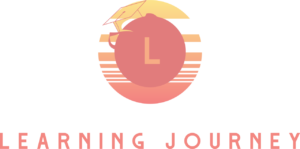Why More Adults Are Making the Leap Into Tech Careers
The world of technology is no longer reserved for the young or the traditionally trained. More adults are recognizing the opportunity and flexibility that tech careers can offer. Whether you’re looking to escape burnout, pivot into a future-proof industry, or find meaningful remote work, the tech field welcomes diverse backgrounds and experiences. Companies are expanding their hiring perspectives and valuing soft skills like problem-solving, leadership, and communication just as much as technical know-how. The pandemic accelerated digital transformation, and this shift created a surge in demand for tech-literate workers across industries. From cybersecurity to UX design and project management, roles are evolving, and they’re not limited to coders alone. Adults from education, finance, healthcare, marketing, and other sectors are stepping into tech roles and discovering new paths that align with both their skills and life goals.
What’s even more empowering is the access to affordable and flexible learning paths designed specifically for adult learners. Online certifications, self-paced programs, and bootcamps now cater to busy professionals juggling families, jobs, and financial obligations. These flexible education models allow you to gain highly relevant skills without needing to commit to four years in a university setting. The landscape is rapidly changing—and it’s creating real opportunities for adults to thrive in tech roles that didn’t exist just a decade ago.
Assessing Where You Are and Where You Want to Go
Before diving into training, it’s essential to evaluate where you stand and what direction makes the most sense. The tech transition plan for adults starts with a skills inventory. What have you done in past roles that can translate into the digital space? Perhaps you’ve managed teams, organized complex projects, or worked with data—all of which are relevant in tech. Consider where your interests lie: Are you drawn to coding, data, design, cybersecurity, or something else? Mapping your personal strengths and curiosities to specific tech roles is a critical early step.
Equally important is defining your end goal. Are you aiming for remote freelance work, a corporate tech job, or launching your own startup? Once you set a clear vision, you can reverse-engineer the steps needed to get there. Break that vision down into short-term milestones so you can measure progress along the way. This process gives clarity, helps you avoid overwhelm, and ensures you’re moving in a direction aligned with both your career goals and lifestyle. Clarity at this stage prevents wasted time and money and boosts your motivation throughout the journey.
Building a Personalized Tech Transition Roadmap
Your tech transition plan should reflect your timeline, lifestyle, and financial flexibility. Break it into manageable stages: the first 30 days could be devoted to exploration—taking intro courses, researching career paths, and networking with tech professionals. The next 60 days might focus on enrolling in a training program, working through tutorials, and beginning your first portfolio project. By 90 days, you might aim to complete a certification, begin freelance gigs, or apply for entry-level positions.
Choose a learning format that suits your needs. Some adults prefer the discipline of structured bootcamps, while others thrive in self-paced environments. If you’re balancing a full-time job or caregiving responsibilities, flexibility is key. Prioritize training programs that offer practical, project-based learning to help you build a portfolio. Don’t get caught up in earning every certification available—focus on the ones that are respected in your chosen field and will help you land your first role.
Treat your plan like a dynamic roadmap. Adjust it based on your progress, interests, and life circumstances. Staying organized and consistent with small weekly goals makes a huge difference. Even 5–10 hours per week can lead to remarkable progress over time. Your success lies in momentum, not perfection.
Overcoming Common Mental and Emotional Hurdles
One of the biggest challenges adults face when shifting into tech is the inner voice of doubt. Imposter syndrome, fear of starting over, and tech intimidation are common. You might worry that you’re too old to start, not smart enough to code, or lacking the credentials to compete. These thoughts are natural, but they’re not true. The key is to reframe your mindset from “starting over” to “building on what you already know.” Your life experience is an advantage, not a disadvantage.
Adopt a growth mindset—understand that skills are built through effort and persistence, not innate talent. When you hit roadblocks, remember that every beginner struggles. Find support systems that reinforce your belief in yourself. Join forums, attend webinars, and talk to others who have made the leap. Listening to peers can normalize the challenges and reignite your motivation.
Also, set realistic expectations. Mastering a new tech skill takes time, but each step forward is a win. Whether it’s debugging your first app or finishing a module, celebrate small victories to build momentum. Confidence grows with action. The more you practice and stay consistent, the more capable you’ll feel.
Gaining Real-World Experience While You Learn
One of the most effective ways to fast-track your tech transition is by applying what you learn through real-world projects. Don’t wait until you feel “ready” to get hands-on. Start small: create a website, build a data dashboard, or troubleshoot software for a local nonprofit. Freelancing platforms like Upwork or Fiverr can provide paid experience, even at a beginner level. Volunteering for tech tasks in your community or contributing to open-source projects on GitHub can also build credibility.
These projects become portfolio pieces that showcase your abilities to potential employers. Even one solid project can speak volumes more than a certificate. Employers want to see what you can actually do, not just what you’ve studied. Think of your portfolio as your new resume—it reflects your problem-solving ability, creativity, and technical skills in action.
Also, document your process. Share what you’re building on LinkedIn or create a simple blog. This builds visibility and positions you as someone serious about your tech transition. Demonstrating initiative and continuous improvement can set you apart from other candidates, regardless of your background.
Networking and Leveraging Professional Communities
In tech, who you know can open just as many doors as what you know. Adult learners benefit greatly from joining professional communities where knowledge-sharing and support are the norm. LinkedIn groups, Slack channels, Reddit threads, and local meetups are all great spaces to build your network. You don’t need to be an extrovert—just being present and asking thoughtful questions can go a long way.
Finding a mentor who understands the adult transition into tech can be incredibly helpful. They can offer insights, encouragement, and guidance when things feel uncertain. Mentors also help you spot blind spots and give practical advice on how to approach interviews or project work.
Stay active in your circles. Attend virtual workshops, participate in Q&A sessions, and share your learning journey. You’ll build confidence, find opportunities, and even get referred to job openings before they go public. Never underestimate the power of showing up and being visible in the right spaces.
Applying for Tech Roles with a Non-Tech Background
When it’s time to job hunt, the way you present your experience matters. Instead of apologizing for your lack of traditional tech credentials, highlight how your past roles have prepared you for the challenges of the digital world. Project management, communication, customer service, and critical thinking are all valuable in tech roles. The goal is to translate your background into the language of tech.
Craft a resume that focuses on accomplishments and outcomes. Use your portfolio to demonstrate how you’ve applied your new skills. Be ready to talk about your learning journey confidently in interviews. Emphasize how you’ve built relevant skills, worked on real-world projects, and understand the industry you’re entering.
Don’t shy away from entry-level roles—they’re your launchpad. Once you’re in, it’s easier to move up. Also, consider contract or freelance roles as stepping stones. They give you flexibility and allow you to build experience that counts. Stay patient, persistent, and open to learning on the job.
Staying Relevant and Growing Beyond the Transition
Landing your first role isn’t the finish line—it’s just the beginning. The tech world evolves rapidly, so continued learning is part of the journey. Subscribe to industry newsletters, attend webinars, and keep an eye on emerging tools and trends. Set goals to deepen your expertise in areas that interest you—whether it’s automation, AI, or web development.
As you gain experience, consider specializing. Becoming a subject matter expert can boost your earning potential and open leadership doors. Your background might lend itself well to hybrid roles that bridge your former career and your new tech focus—such as tech in healthcare, education, or finance.
Also, maintain a self-care routine. The transition can be intense, and burnout is real. Prioritize rest, boundaries, and hobbies that recharge you. Sustainability is key to long-term success in any career—and especially in one that never stops evolving.
FAQ: Tech Transition Plan for Adults
Q1: How long does it typically take for an adult to switch into a tech career?
It varies widely based on the field and your availability, but many adults transition into entry-level roles within 6 to 12 months with focused effort.
Q2: Do I need a degree in computer science to get hired in tech?
No. Many roles in tech prioritize skills and project experience over formal degrees. Certifications and portfolios can often be more valuable.
Q3: What’s the best way to balance a tech transition while working full-time?
Time-block your week, set small achievable goals, and choose flexible learning options like online courses or night/weekend bootcamps.
Q4: Are there tech fields that are more beginner-friendly for adults?
Yes—tech support, QA testing, web development, digital marketing, and project coordination are all accessible entry points.
Q5: What if I’m not good at math or have no coding experience—can I still work in tech?
Absolutely. Many tech roles involve logic, organization, or creativity rather than advanced math. Design, tech writing, and product management are great non-coding options.

